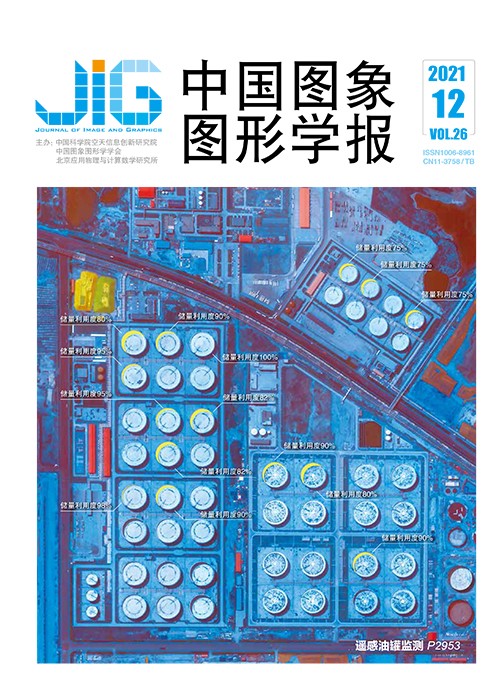
环视鱼眼图像处理深度学习研究进展
包俊1,2, 刘宏哲1,2, 褚文博3(1.北京市信息服务工程重点实验室, 北京 100101;2.北京联合大学机器人学院, 北京 100101;3.国汽(北京)智能网联汽车研究院有限公司, 国家智能网联汽车创新中心, 北京 100176) 摘 要
视觉环境感知在自动驾驶汽车发展中起着关键作用,在智能后视镜、倒车雷达、360°全景、行车记录仪、碰撞预警、红绿灯识别、车道偏移、并线辅助和自动泊车等领域也有着广泛运用。传统的环境信息获取方式是窄角针孔摄像头,视野有限有盲区,解决这个问题的方法是环境信息感知使用鱼眼镜头,广角视图能够提供整个180°的半球视图,理论上仅需两个摄像头即可覆盖360°,为视觉感知提供更多信息。处理环视图像目前主要有两种途径:一是对图像先纠正,去失真,缺点是图像去失真会损害图像质量,并导致信息丢失;二是直接对形变的鱼眼图像进行建模,但目前还没有效果比较好的建模方法。此外,环视鱼眼图像数据集的缺乏也是制约相关研究的一大难题。针对上述挑战,本文总结了环视鱼眼图像的相关研究,包括环视鱼眼图像的校正处理、环视鱼眼图像中的目标检测、环视鱼眼图像中的语义分割、伪环视鱼眼图像数据集生成方法和其他鱼眼图像建模方法等,结合自动驾驶汽车的环境感知应用背景,分析了这些模型的效率和这些处理方法的优劣,并对目前公开的环视鱼眼图像通用数据集进行了详细介绍,对环视鱼眼图像中待解决的问题与未来研究方向做出预测和展望。
关键词
Research progress of fisheye image processing based on deep learning
Bao Jun1,2, Liu Hongzhe1,2, Chu Wenbo3(1.Beijing Key Laboratory of Information Service Engineering, Beijing 100101, China;2.College of Robotics, Beijing Union University, Beijing 100101, China;3.China Inteligent and Connected Vehicles(Beijing) Research Institute Co., Ltd., National Innovation Center of Inteuigent and Connected Vehicles, Beijing 100176, China) Abstract
The four core technologies of automatic driving have evolved environment perception, precise positioning, path planning. and line control execution. Perfect planning must establish a deep understanding of the surrounding environment for environmental perception, especially the dynamic environment. Visual environment perception has played a key role in the development of autonomous vehicles. It has been widely used in intelligent rearview mirror, reversing radar, 360° panorama, driving recorder, collision warning, traffic light recognition, lane departure, line-parallel assistance, automatic parking and etc. The traditional way to obtain environmental information is the narrow-angle pinhole camera, which has limited field of vision and blind area. Multiple cameras are often needed to be covered around the car body, which not only increases the cost, but also increases the information processing time. Fisheye lens perception can be an effective way to use for environmental information. The large field of view (FOV) can provide the entire hemisphere view of 180°. Theoretically, The capability to cover 360° to avoid visual blindness, reduce the occlusion of visual objects, provide more information for visual perception and greatly reduce the processing time with only two cameras. Based on deep learning, processing surrounded image has been mainly processed in two ways. First, the surrounded fisheye image is transformed into ordinary normal image based on the image correction and distortion. The corrected image has been processed via classical image processing algorithm. The disadvantage is that image distortion can damage image quality, especially the image edges, lead to important visual information missing, the closer the image edge, the more loss of information. Second, the distorted fisheye image has been modeled and processed directly. The complexity of the fisheye image geometric process (model) cannot make the algorithm to migrate to the surrounded fisheye image very well, which is determined by the imaging characteristics of ordinary image and fisheye image, there is no surround fisheye image modeling model with better effect. Finally, there is no representative public dataset to carry out unified evaluation of the vision algorithm, and there is also a lack of a large number of data for model training. The related research directions of the fisheye image including the correction processing of the fisheye image have been summarized. Subdivided into the fisheye image correction method based on calibration has been conducted and the fisheye image correction method based on the projection transformation model has been demonstrated; the target detection in the fisheye image has been mainly introduced to pedestrian detection as well. The city road environment semantic segmentation, pseudo fisheye image dataset generation method has mainly been introduced based on the semantic segmentation of fisheye images. The other fisheye image modeling methods have been used to list the approximate proportion of these research directions and analyze the application background and real-time characteristics of the environment of automatic driving vehicle. In addition, the general datasets of the fisheye image has included the size of these datasets, publishing time, annotation category and etc. The experimental results of object detection methods and semantic segmentation methods in the fisheye image have been compared and analyzed. The evaluation dataset of fisheye image, the construction of algorithm model of fisheye image and the efficiency of the model issues have been discussed. The fisheye image processing has been benefited from the development of weak supervised and unsupervised learning.
Keywords
automatic drive surround fisheye images image correction object detection semantic segmentation fisheye image dataset research overview
|



 中国图象图形学报 │ 京ICP备05080539号-4 │ 本系统由
中国图象图形学报 │ 京ICP备05080539号-4 │ 本系统由